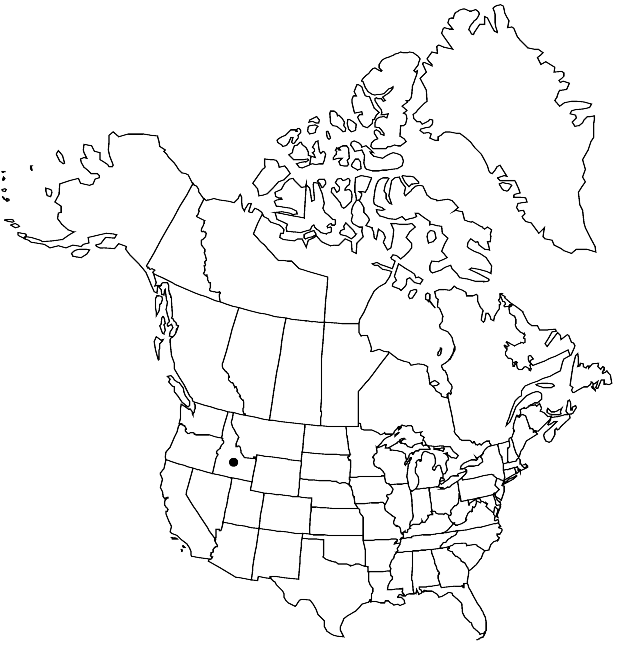Boechera rollinsiorum
Harvard Pap. Bot. 11: 81. 2006.
Perennials; long-lived; sexual; caudex woody. Stems usually 3–5 per caudex branch, arising from margin of rosette, elevated above ground surface on woody base, 1–2.5 dm, densely pubescent proximally, trichomes short-stalked, 2–4 (or 5) -rayed, 0.2–0.4 mm, moderately to sparsely pubescent distally. Basal leaves: blade oblanceolate, 3–5 mm wide, margins entire, ciliate proximally, trichomes (simple), to 0.6 mm, surfaces densely pubescent, trichomes short-stalked, 2–4 (or 5) -rayed, 0.15–0.4 mm. Cauline leaves: 5–9, not concealing stem; blade auricles 0.5–1 mm, surfaces of distalmost leaves sparsely to moderately pubescent. Racemes 5–11-flowered, usually unbranched. Fruiting pedicels descending, straight to slightly recurved, 4–6 mm, pubescent, trichomes appressed, branched. Flowers divaricate-ascending at anthesis; sepals pubescent; petals pale-purple, 6–8 × 1.5–2 mm, glabrous; pollen ellipsoid. Fruits (immature) pendent, not appressed to rachis, not secund, straight, edges parallel; valves glabrous. Seeds not seen.
Phenology: Flowering Jun.
Habitat: Metamorphosed igneous gravel on steep slopes
Elevation: ca. 2100 m
Discussion
Boechera rollinsiorum shows superficial similarities to both B. glareosa and B. lasiocarpa (see M. D. Windham and I. A. Al-Shehbaz 2006 for detailed comparison). It is known thus far only from the type collection below Galena Summit in central Idaho.
Selected References
None.
Lower Taxa
"elongated" is not a number."thick" is not a number."dm" is not declared as a valid unit of measurement for this property.

